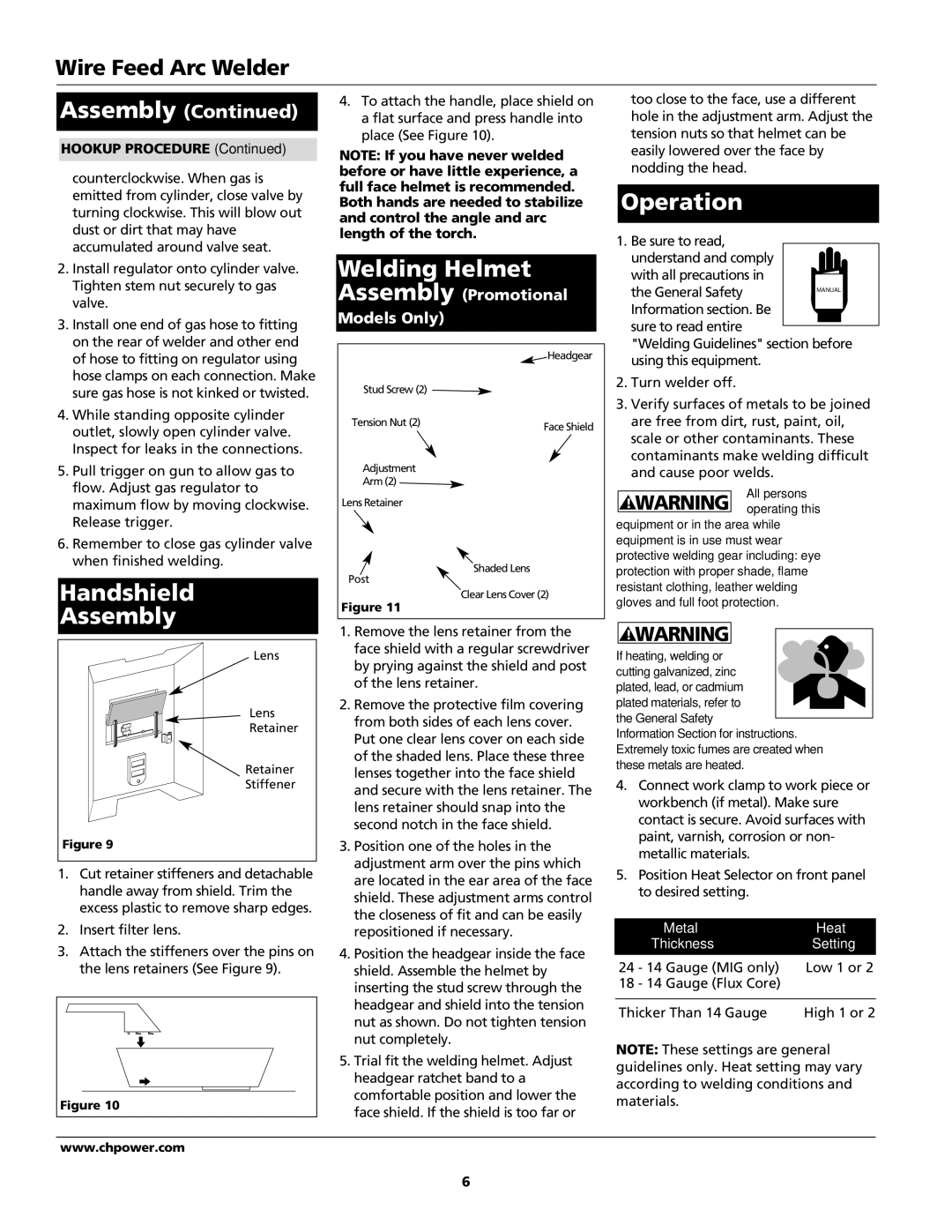WG2045, WG2044, WG2040, WG3000 specifications
The Campbell Hausfeld WG3000, WG2040, WG2044, and WG2045 are a collection of high-performance pressure washers designed to deliver exceptional cleaning power for a variety of tasks. Whether you are tackling tough grime on driveways or washing vehicles, these models come equipped with advanced features and technologies tailored to meet diverse cleaning needs.The WG3000 is renowned for its robust 3000 PSI performance, making it a powerhouse for heavy-duty cleaning jobs. Its electric start motor provides effortless startup, eliminating the hassle of pull cords. This model is equipped with a durable pump that enhances longevity while ensuring consistent water pressure. Additionally, its ergonomic design includes a comfortable handle and wheels for easy maneuverability, allowing users to navigate different terrains with minimal effort.
The WG2040, featuring a 2040 PSI output, is perfect for medium-duty cleaning tasks. It boasts a compact design that makes storage and transport a breeze. The WG2040 is equipped with an adjustable spray nozzle, providing versatility for various cleaning applications, from gentle rinsing to intense pressure washing. With its lightweight frame and built-in detergent tank, users can seamlessly switch between washing and rinsing, enhancing efficiency.
On the other hand, the WG2044 model builds on the WG2040's strengths while offering additional features such as an onboard detergent tank and larger wheels for enhanced stability during operation. Its 2040 PSI power ensures that it can tackle tough stains on surfaces like patios or wooden decks, while its quick-connect spray tips allow for swift changes between different spray patterns.
Meanwhile, the WG2045 takes versatility to the next level with its multi-function accessory kit, which includes various nozzles and brushes. This model stands out with its 2045 PSI capacity, ideal for medium to heavy-duty tasks. Its design focuses on user convenience, featuring an easy-to-assemble structure and a robust hose reel that keeps the hose organized and free from tangles.
Overall, the Campbell Hausfeld WG3000, WG2040, WG2044, and WG2045 are engineered with durability and functionality in mind. Their advanced features, such as adjustable nozzles, onboard detergent tanks, and user-friendly designs, make them exceptional choices for anyone seeking quality performance in their pressure washing tasks. Whether for home maintenance or professional use, these models present an optimal blend of power, versatility, and convenience.

